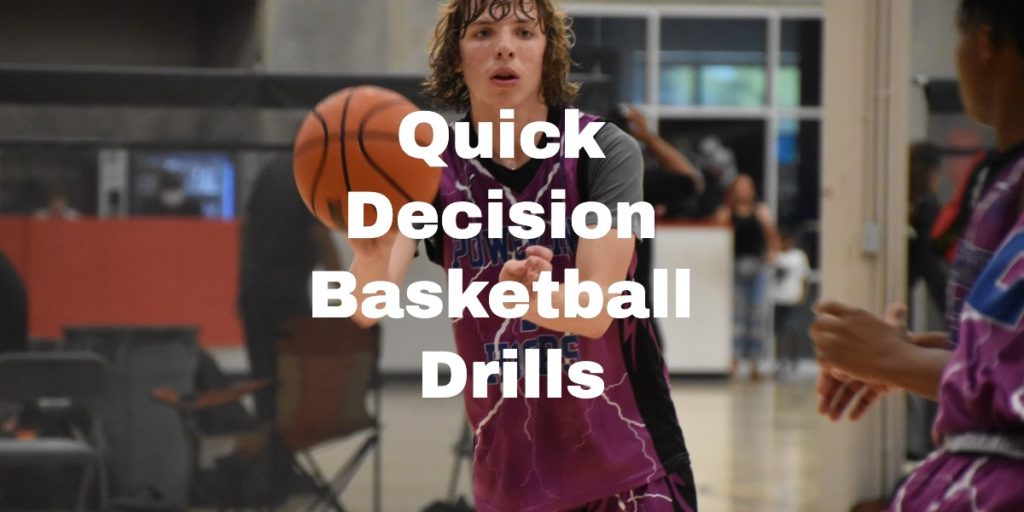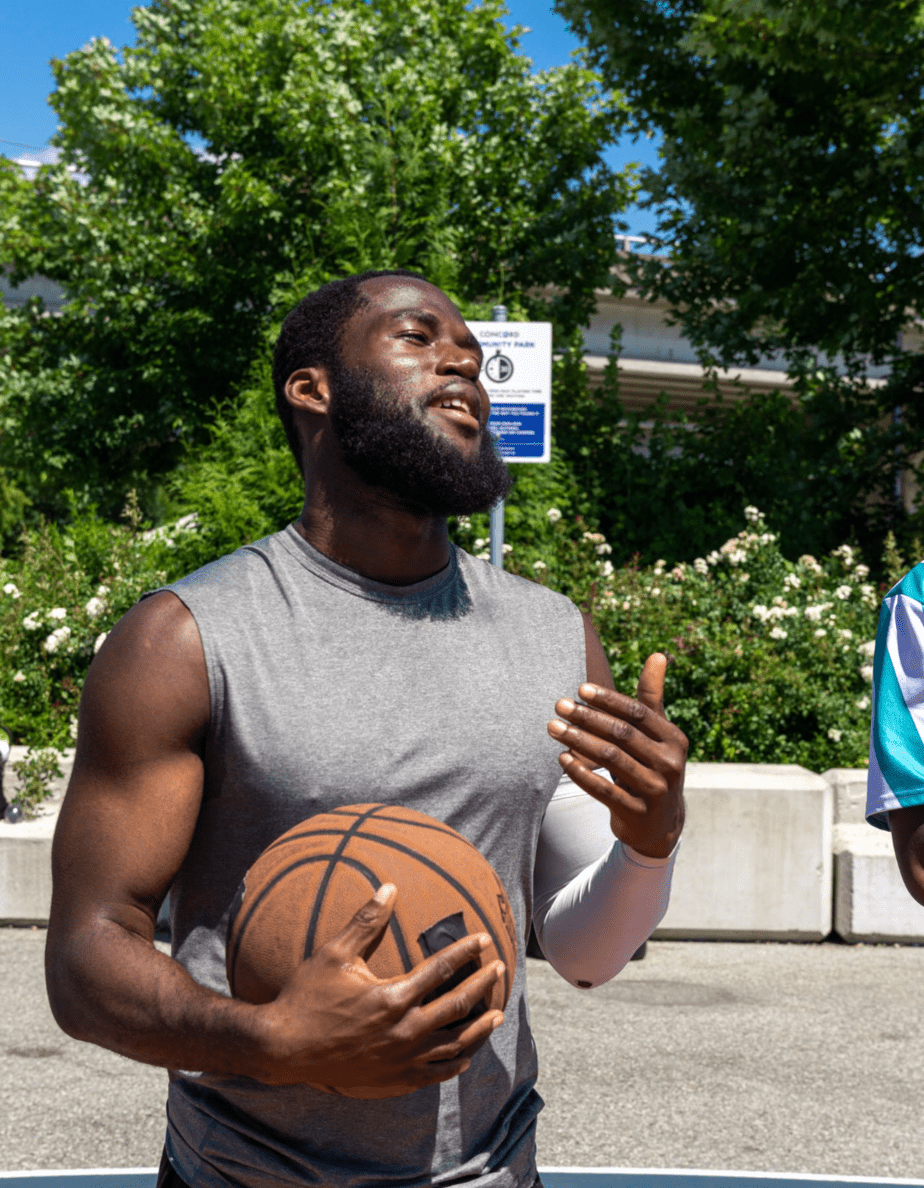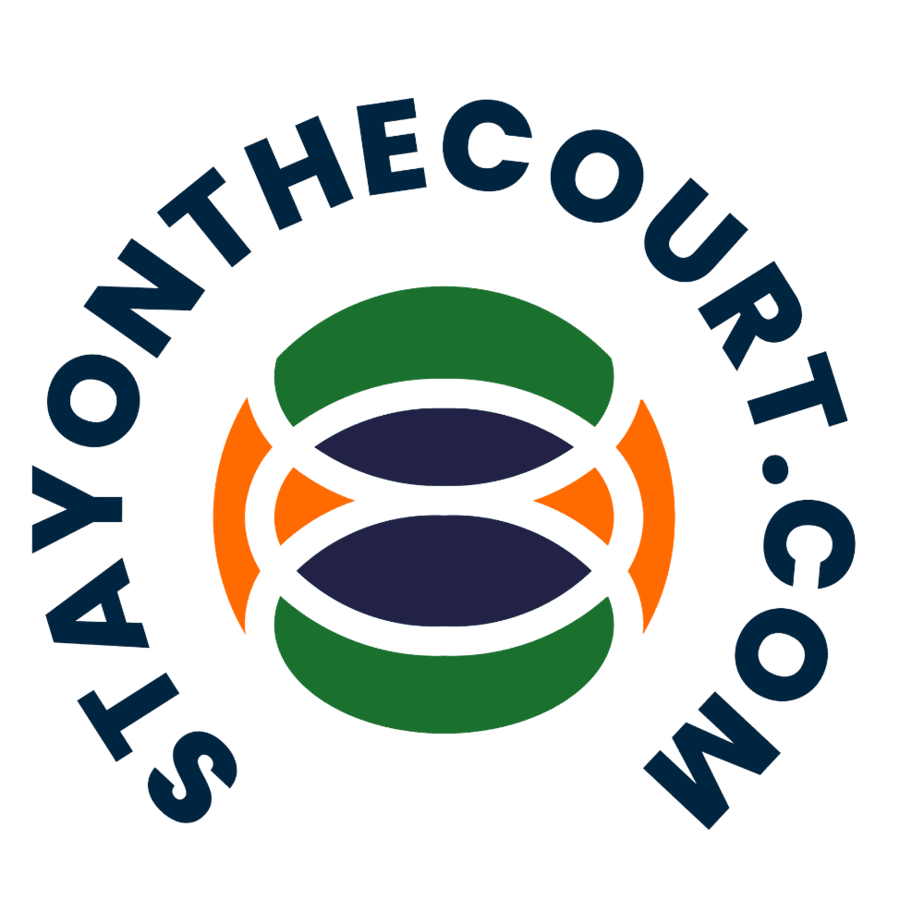Quick Decision Basketball Drills for Passing, Layups, Shooting, and Defense
This has become one of my favorite youth basketball drills for making quick decisions in passing, layups, shooting, and defense. I found it originally when I was searching for some drills to help my 4th-grade boy’s team to get shots off quickly. They were either dribbling too much or waiting too long allowing the defense to close on them. I was a little worried they might find it boring, but they all seemed to enjoy it. Especially, when they had to play defense with their back to the basketball.
This is a unique series of drills designed to enhance your basketball players’ decision-making speed on the court. These drills focus on improving passing, layups, and defense skills – essential components of every great player’s repertoire.
This video is by coach John Ashworth, Head Basketball Coach at Hamilton Southeastern High School in Fishers, Indiana. It walks through the 3 main variations of the drill. Then I have broken it down in writing below.
1. Reaction Layups
The first drill in this series is called “Reaction Layups”. This is a 2-on-1 offensive drill with a unique twist – the offensive team is not allowed to make passes. The goal here is to score quickly off the catch.
Why no passes? This constraint forces the offensive player to react immediately upon receiving the ball, encouraging faster decision-making. It’s a fantastic drill for defense as well. The defender’s goal is to challenge the shot without committing a foul, teaching them to react quickly and decisively.
Once the layup is taken, the shooter transitions to defense, ensuring everyone gets a chance to hone both their offensive and defensive skills. This drill creates a dynamic, fast-paced environment where everyone must be ready to react in an instant.
2. Reaction Drives
The next variation of our quick decision-making drills involves adding drives. In “Reaction Drives”, the offensive players start at the elbows and must make quick decisions to drive the ball to the basket. However, there’s a catch – the offense is limited to just one pass.
By limiting passes, we’re again pushing players to make rapid decisions. The defense starts at the white line (As seen in the video) or if you have a restricted area circle you could use the top edge, adding another layer of complexity and realism to the drill. This variation reinforces the importance of quick decision-making in real-game scenarios, particularly in 2-on-1 situations.
3. Reaction Shots
The final variation in this series adds jump shots to the mix. “Reaction Shots” requires the offensive players to either make a quick pass or decide to shoot the ball rapidly. The defense, again, is instructed to make the offense throw two passes – if they can, they win the drill.
As in the previous drills, the offense is limited to one pass. This encourages players to make quick decisions and adds a valuable element of game-like pressure. The inclusion of pass fakes and shot fakes can add even more depth and realism to the drill.
Just like with the other drills, “Reaction Shots” is a great way to train both offensive and defensive skills. The drill encourages players to get their shots off quicker and to deliver good passes, crucial for any good shooter. On the defensive side, it’s a great exercise to cover ground, stop the ball, and challenge every shot.

Conclusion and Application Of Quick Decision Basketball Drills
These exercises are designed to help players make quicker decisions in real-game situations. I felt like this drill gave the kids permission to shoot the ball quickly and I found that we did, as a team, start getting more shots up per game. I hope it will help these quick decision basketball drills will help your team’s decision-making as well.
If you have a younger youth team I found the “Reaction Shots” got a little confusing for them. But, if you start doing the drills regularly they will catch on. These also work really well if you only have a half-court. If you have an assistant coach you can split the team into groups of 4 or 5 so they get more reps.
Troy Wallace
Troy Wallace is Certified Basketball Speed Specialist and shares his experiences in trying to stay as healthy as possible to stay on the court. He is active in coaching youth basketball in YMCA, Team Work Sports Nebraska, and, currently, in the Jr. Warriors program in Omaha, NE. Visit Troy's Full Author Bio Page or email him directly.
Meaningful conversations happening daily about training, recovery, and injury-specific rehabilitation as well as sport-specific discussions on playing, coaching and refereeing your favorite sport. We welcome experts and those with curious minds seeking answers.
Join The Stay On The Court Community!